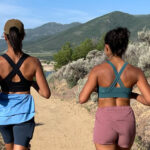Our Favorites: Backcountry Skiing and Splitboarding Gear for Women
A Gear List Written By and For Women in the Backcountry
Every year when I dust off my backcountry kit, I take stock of what worked the previous season. I scrutinize everything, from the snacks I carry to the spare gloves in my backpack. What worked, and what can be improved?
On my eighth season chasing wild snow, I’ve finally decided to document (and share) my notes: a good checklist always gets me ready for the first turns of the season. The process of taking stock, unpacking, and organizing is a routine that reflects not just the ritual of beginning a season of backcountry skiing; it’s also a time to prioritize goals and cultivate community.
As a woman in the backcountry, it took me years to realize that many gear lists overlook topics that can make or break my day. Typically, gear checklists prioritize basics, overlooking key details that make can make the woman’s experience all-time. This list attempts to change that, sharing information tailored for women (and written by a woman).
Whether it’s your first or fiftieth year backcountry skiing, I hope this roundup stokes out as much as it did me. Did I forget to mention anything important? Leave a comment below!

Bring the Right Backcountry Essentials
Beacon: Backcountry Access Tracker 4
How do you make the best tracker in the industry better? Add on a rubber grip and larger display to make the intuitive display even easier to read.
Shovel: Backcountry Access – Shaxe Speed Shovel
I love extendable shovels with hoe mode for the sheer volume of snow they can move. This Shaxe Speed takes it to the next level by shaving off weight. Thinking ahead to ski mountaineering in the spring? Try the BCA Shaxe Tech, a 2-in-1 model that combines an ice ax with the shovel for added weight savings.
Probe: Ortovox Probe Alu 320+ PFA
The Ortovox – Probe Alu 320+ PFA offers a compact, durable, and renewable probe option: replace the probe tip if it’s ever worn out, and take advantage of the rubber grip for increased precision and speed.
Want to shop around? Check out Ortovox’s useful probe guide here, and remember: anything less than 240 cm is a no-go. The longer the probe, the better: this means the deeper you can dig, and the more space you have for your hands to spread out shock on the probe while searching. (Handy tip: when buying a probe, pay attention to the material. Consider the durability versus weight tradeoff when reviewing steel, aluminum, and carbon fiber options.)
Outerwear: Hard Shell or Soft Shell?
A hard shell kit can get you through all types of weather; a soft shell, best suited to dry snow and/or sunny days, saves weight. Favorites include: the Flylow Foxy bib and Outdoor Research Hemispheres kit (for hard shells), and Outdoor Research Skyward II kit (for soft shell). If you’re planning on exiting resort gates to access lift-accessed backcountry (AKA sidecountry), the Outdoor Research Carbide kit offers a good mix of features, too.
The number of pockets, fit, and features is totally a matter of personal preference. Fit, though, has to be found through trial and error (and is totally based on a brand’s individual designs). First time buying? Ask friends in the Outdoor Prolink Community for their advice!

Ski Socks: Ortovox – Women’s All Mountain Long Sock
Thin, merino wool socks are the only way to go (as far as I’m convinced). I love the Ortovox – Women’s All Mountain Long Socks for everyday wear in the mountains.
Buff: Flylow Gobbler
Buffs are a straightforward affair: protect your face, neck , and lips from wind, sun, and cold.
Have space for two buffs in your bag? They’re also great headbands!
Baselayer: Wool or Synthetic?
Merino options like the Ortovox – Women’s 210 Supersoft Zip Neck and midweight 260 Tech Merino Baselayer Leggings from Icebreaker are breathable, soft, and warm.
Pick a synthetic base layer for high intensity activities when moisture management is an issue. I like Outdoor Research’s Enigma top and bottoms for their lightness and quick-drying fabric. Rab’s Nexus Pull-on is a great light technical fleece for those of us who want extra warmth in a base layer
Undies: Options for All Bodies
With a snug fit around your ribcage, the day-to-night Crux Bra from Black Diamond: functions equally well as a base layer in the spring.
More into merino wool? Ladies with smaller chests might like the Siren Merino Bra from Icebreaker, while those with more ample breasts will appreciate Icebreaker’s soft yet supportive Sprite Racerback Merino Bra.
My favorite unmentionables for the nether regions? Icebreaker also makes a Siren Bikini to match its sleek bralet.
Sunscreen: Vegan Zinc Oxide Balm
Cut your chances of chapping, sunburn, and windburn with this earth-friendly vegan sunscreen stick from 4 the Greater Good. Its zinc oxide formula makes for a healthy, long-lasting product that keeps toxins out of your system (and anywhere else you sweat).
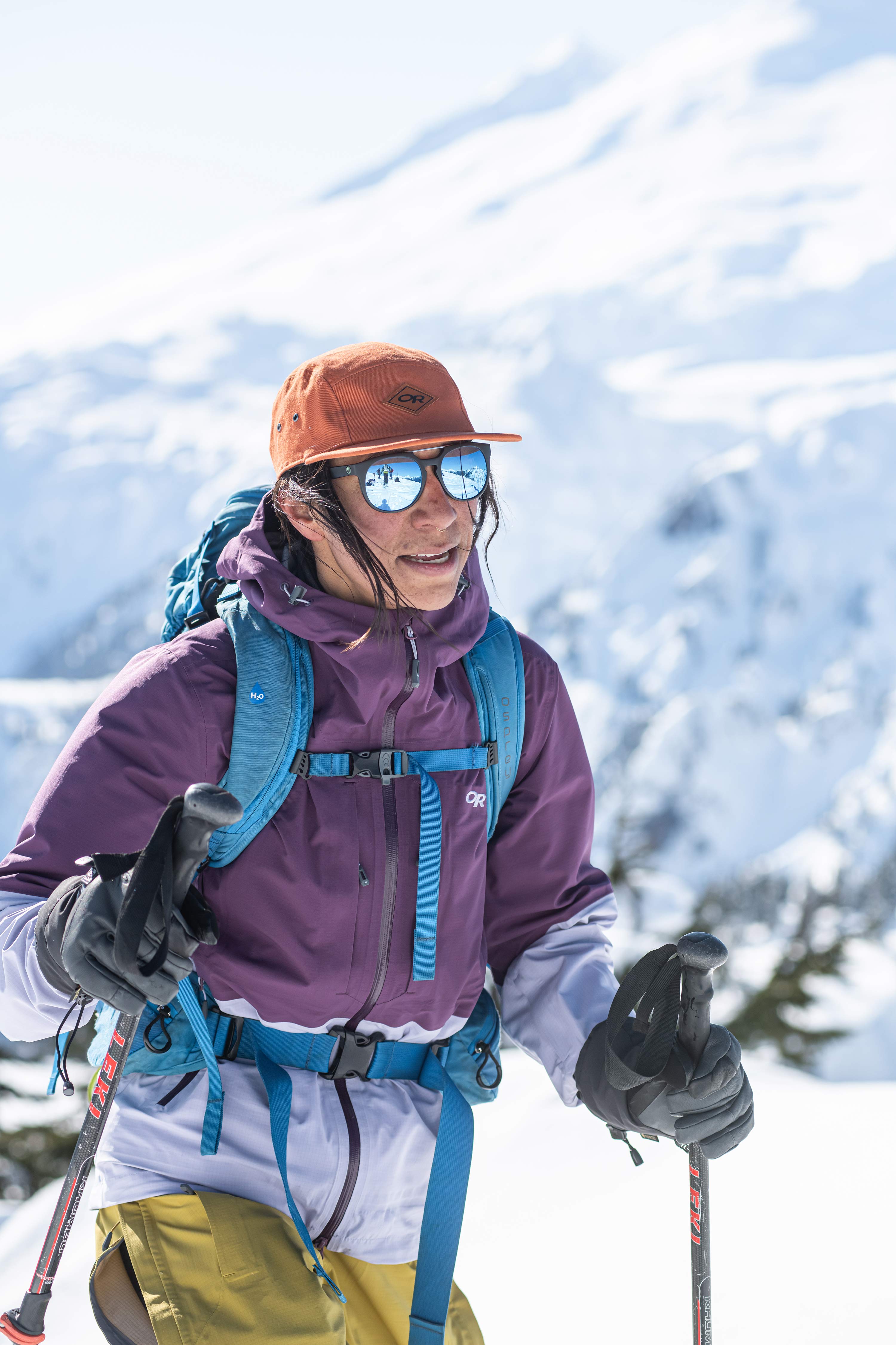
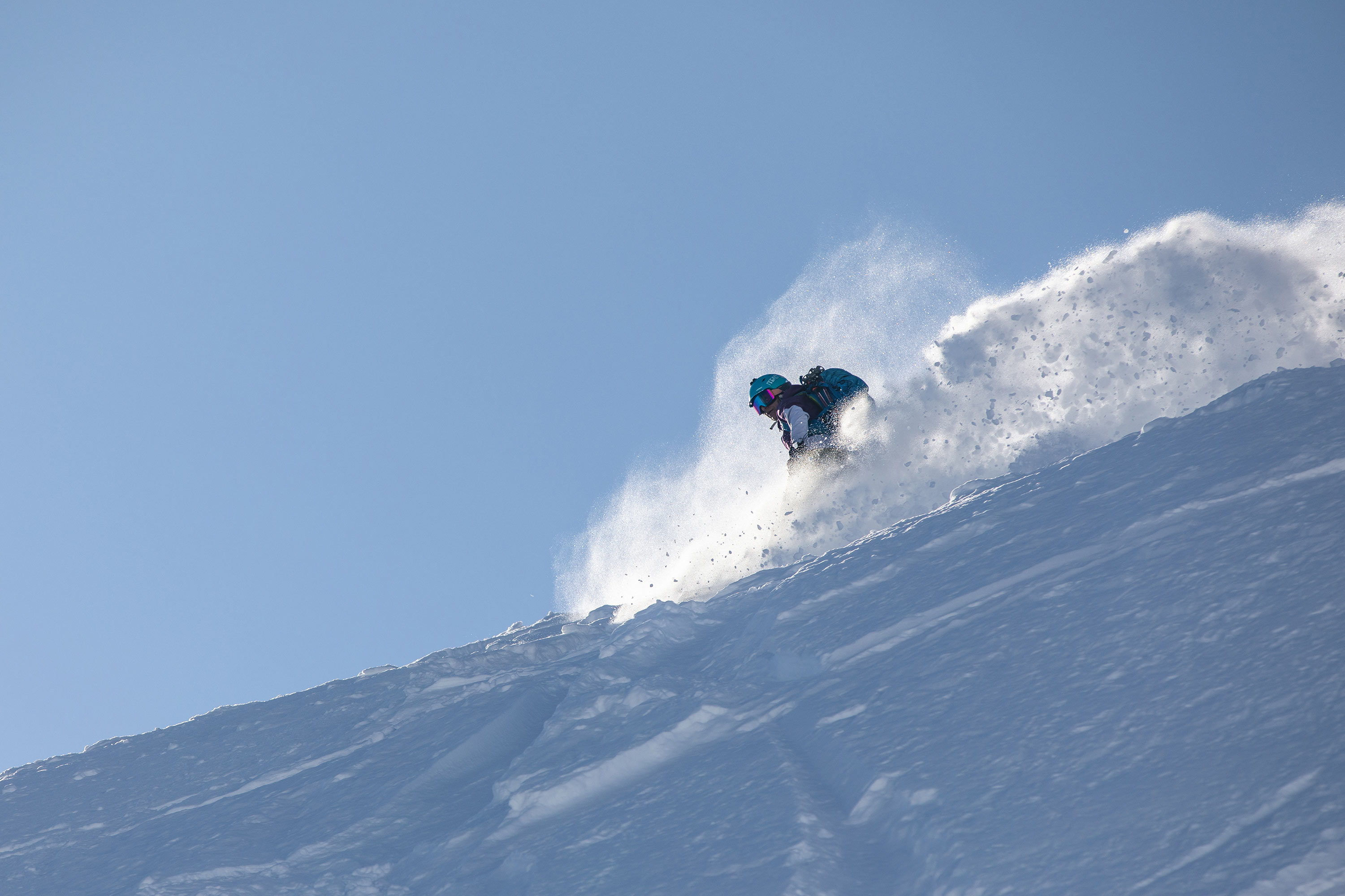
Sunglasses: Julbo Cham Sunglasses
Julbo’s Cham Sunglasses feature side shields, polarized lens, and classic aviator style for eye and style protection at a very affordable price. Check out the expert gear review here.
Goggles: Julbo Quickshift 4S Goggles
Julbo’s goggles are some of the best optics, and with active ventilation control and comfortable fit, you can’t go wrong with the Quickshift 4S Goggles.
Helmet: Two Options
For Most Backcountry Skiing: Pret Lyric X Women’s Helmet
Reviewers at REI and Backcountry.com love the Pret Lyric X Women’s Helmet as a daily driver for its MIPS technology, light weight, and multi-shell construction.
As a ski mountaineer in the market for a new dome protector, I’ll be trying the dual-certified (Alpine x Snow) MTN Lab from Salomon this year, and will report back later.
Backpack:
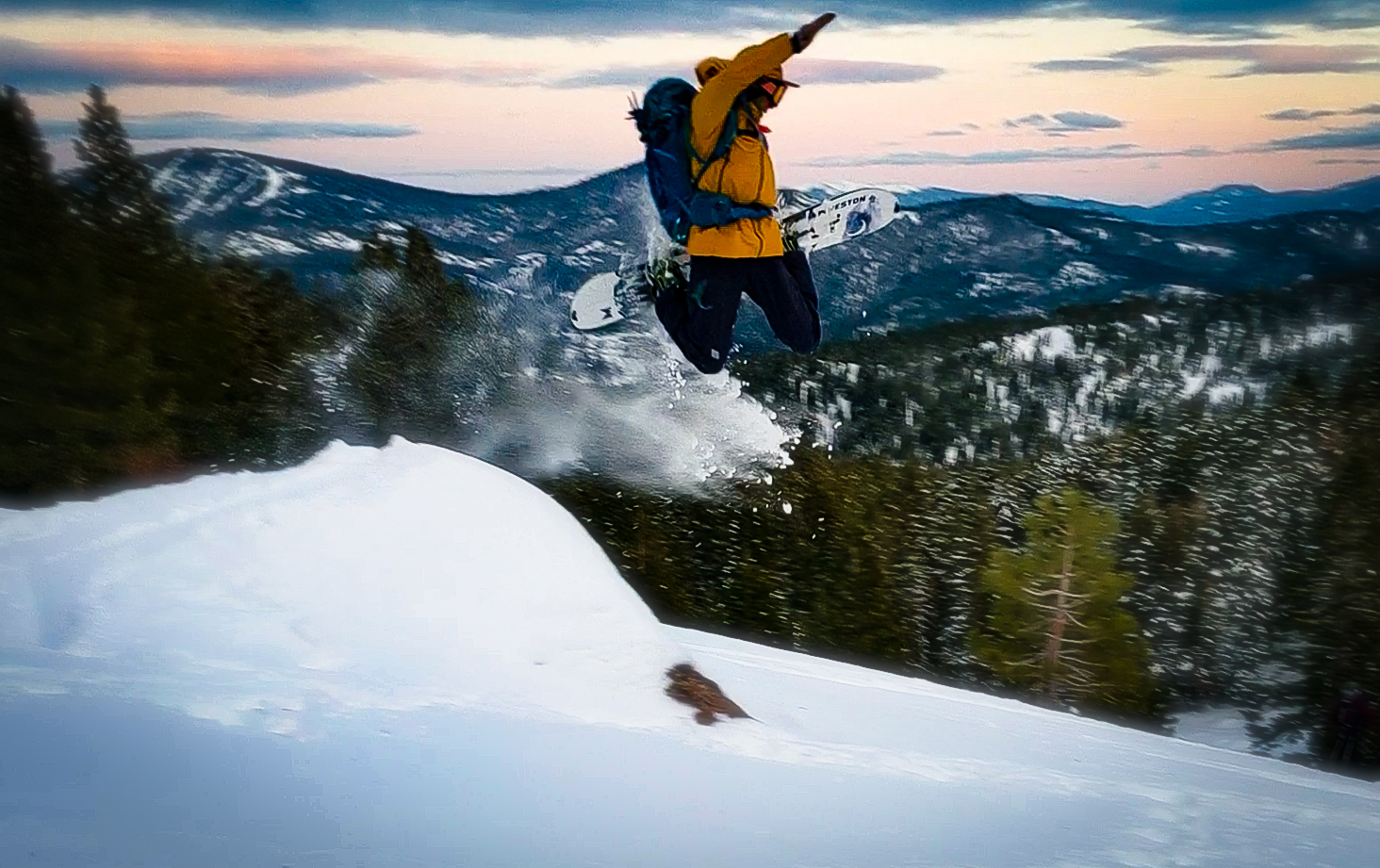
I’ve always been a fan of Colorado-based Osprey Backpacks, which trend towards a cushier ride. Their warranty, too, is bulletproof. Check out women’s-specific backpacks like their non-airbag Osprey Kresta 40 to start. Getting ready to go higher or deeper into the mountains? The Sopris Pro, their avalanche bag using the travel-friendly Alpride electronic system might be for you.
Headlamp: Recharge or Nothing
Having a headlamp for a planned alpine start is a no-brainer, but what about those unintended late evenings wandering back to the car? Don’t tempt fate: put a headlamp in your bag. My Petzl Actik® Core, featuring a rechargeable battery and 450 lumens, is still going strong after 3 seasons of wear and tear.
If you want to go one step further than a rechargeable headlamp, check out the Biolite HeadLamp 330 from a mission-driven organization revolutionizing power off-grid.
Insulated Water Bottle: Camelbak – Chute Mag SST Vacuum Insulated 40oz
Hot tea, hot chocolate, or cold brew: trust me, you’ll want something tasty waiting for you when you hydrate. I never bring less than a liter of warm liquids to drink: the 40oz Chute Mag SST from Camelbak is a lightweight, durable option I love.
Snacks: Vegan Options (or not!)
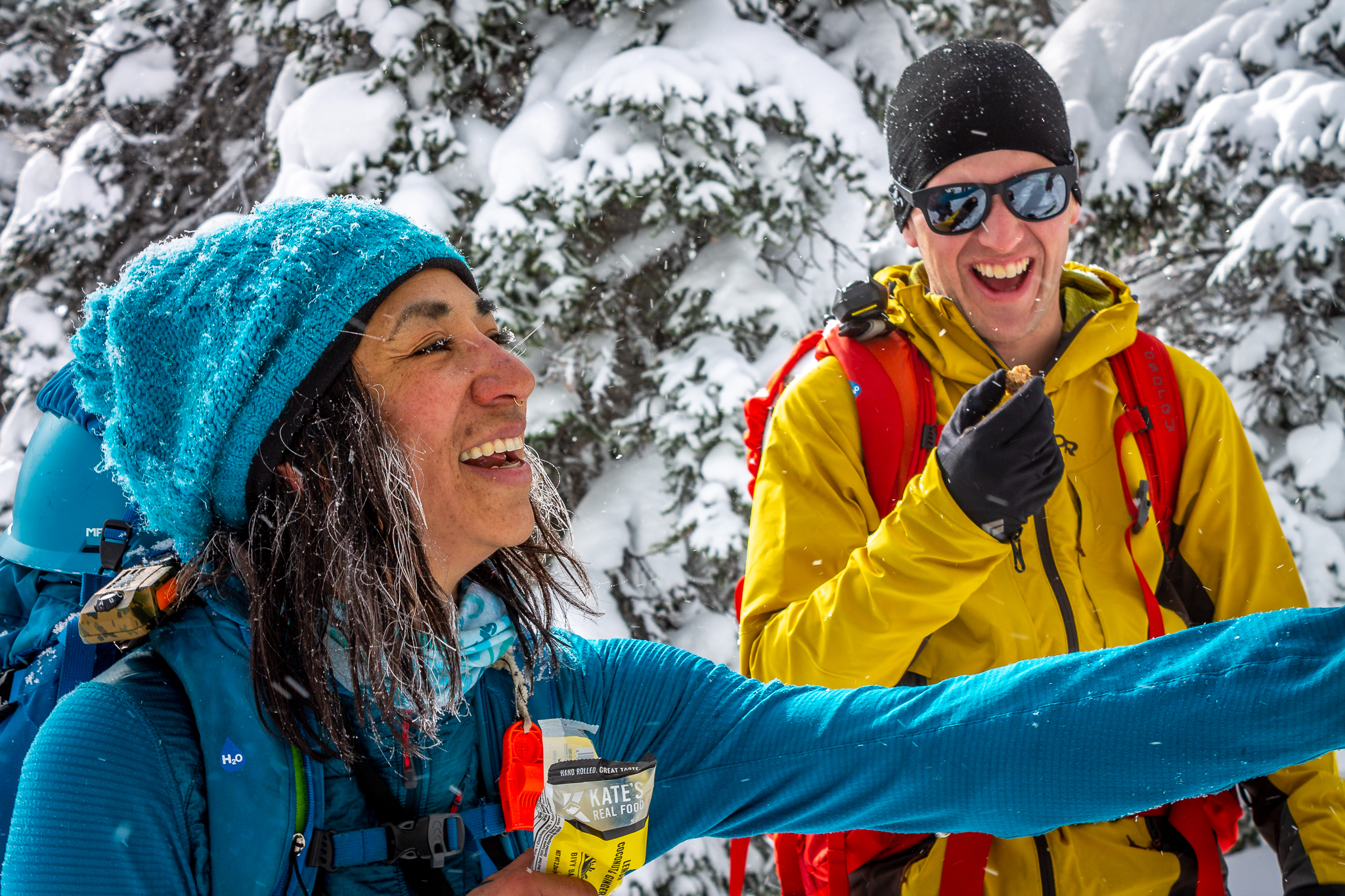
Nutrition is a key part of keeping yourself going throughout the day. In addition to homemade fruit/nut/chocolate mixes and an apple (or two), I like to bring quick-access energy better than candy (to avoid a crash). Organic options like Honey Stinger’s energy chews in Pomegranate Passion Fruit (honey-based) or Untapped’s MapleAid (vegan and maple-based) are wholesome snacks as good for the Earth as they are for you.
Hats (Plural!):
One beanie, one brimmed hat: keep yourself warm and protected from the sun, whether you’re headed uphill or wandering back to the car. Try the Himali early start hat or reversible wool-arcrylic blend Tour Beanie from Dynafit
Gloves or Mitts?
Our Digital Marketing Manager, Jess, swears by her Flylow Oven mitts. With classic mitt styling, the waterproof leather stands up to the elements and looks cool.
More of a glove gal? I love over-the-cuff styles, and will try Outdoor Research’s Super Couloir Sensor Gloves this year.
Radio: Backcountry Access – BC Link 2.0
Radios from BCA have long set the gold standard for backcountry communication. A vast improvement over inexpensive hardware store Walkie-Talkies, I love my BCA radios because they stay charged for a long time, have foolproof channel syncing, are waterproof and easy-to-use.

Other key items for your backcountry ski kit:
- Ski Strap (minimum 4)
- Wag Bag
- Face Mask
- First Aid Kit and other Ten Essentials
- Duct tape
- T-Driver
- Zip ties
Should I Get a Women’s-Specific Splitboard or Skis?
Women are, on average, lighter and smaller than men. And, with a center of gravity based in our hips rather than our shoulders (like it is for men), using skis and splitboards designed for our anatomy often feels like the right decision. But as the most important part of our backcountry setup, skis and splitboards should be a very personal decision.
Not sure where to start? Embrace the “try-before-you-buy” approach: local gear shops like Bentgate (Golden, CO), Jagged Edge (Telluride, CO), Alpenglow (Tahoe, CA), Wilson Backcountry (Jackson, WY), the Mountaineer (Keene Valley, NY), and Backcountry Experience (Durango, CO). Typically, ski areas also offer demo days too, but most resorts haven’t yet scheduled dates due to COVID.
Below, a few of our top pics available for Outdoor Prolink membership discounts.
Splitboards
- Weston Backcountry Riva
- Weston Backcountry Rise
- Coalition Snow Sojourner
- Arbor Women’s Swoon
Skis
- Coalition Snow Rebel All Mountain Ski
- Coalition Snow SOS All Mountain Ski
- Dynafit Beast 98
- Liberty Skis Origin (96)
- Black Crows Corvus Freebird
- DPS Skis – Pagoda 112 RP
Get Out There and Get Some
I know we didn’t address ladies’ backcountry boots, but we’d love to hear what’s working for you in the comments below (or in our Community, open to all professionals working in the outdoors) so we can write about it next time. While we wait for your input (and more snow to fall!), work on building (or improving) your kit with some of the products above.
The backcountry beckons, and with a checklist in hand and education plan in mind, your season awaits. So get out there, have fun, and stay safe!




